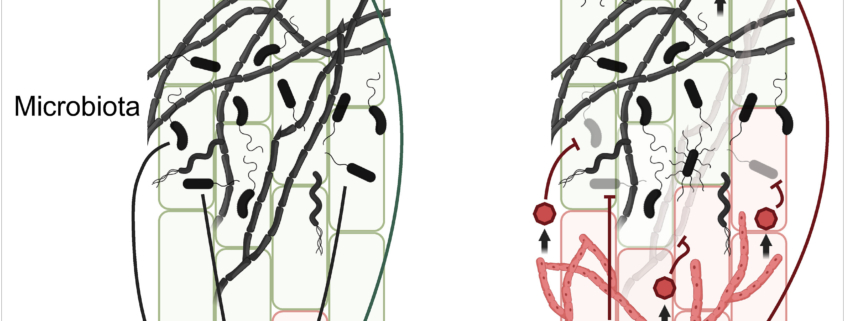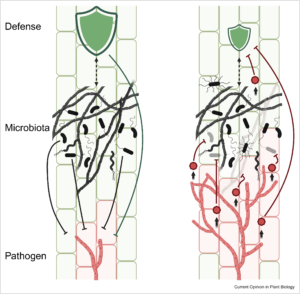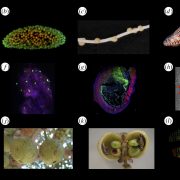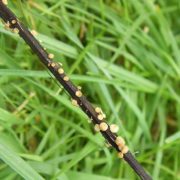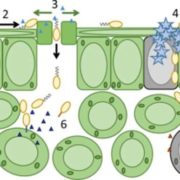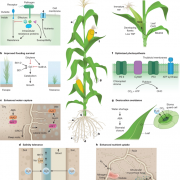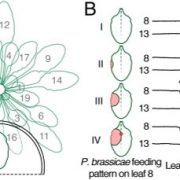Review. Microbial tug-of-war: How plants and pathogens manipulate microbiomes
The composition of plant-associated microbes is influenced by plant genetics, immune responses, environmental factors, and interactions between microbes. During disease development, the microbial community at infection sites changes due to tissue damage, altered immune responses, and manipulation via pathogen effector proteins. Mesny et al. argue that host-pathogen co-evolution involves not just the direct interaction between the two, but also the dynamics within the host’s microbiota. For example, effectors produced by fungal pathogens can have antimicrobial properties that suppress protective microbes, enhancing fungal pathogenicity. On the other hand, foliar infections by fungal pathogens like Botrytis cinerea have been shown to stimulate beneficial microbes like Trichoderma harzianum at plant roots. This recruitment of beneficial microbes, termed the “cry-for-help” response, can have long-lasting effects on the soil microbiota, potentially leading to disease-suppressive soils that protect future crops. However, disease suppressiveness takes years to build up, possibly due to antimicrobial effector proteins secreted by pathogens, which slow down the recruitment of beneficial microbes. Future research should focus on understanding these mechanisms and their long- and short-term effects, leading to new approaches for sustainable disease management. (Summary by Kumanan N Govaichelvan, @NGKumanan) Curr. Opin. Plant Biol. 10.1016/j.pbi.2024.102622


